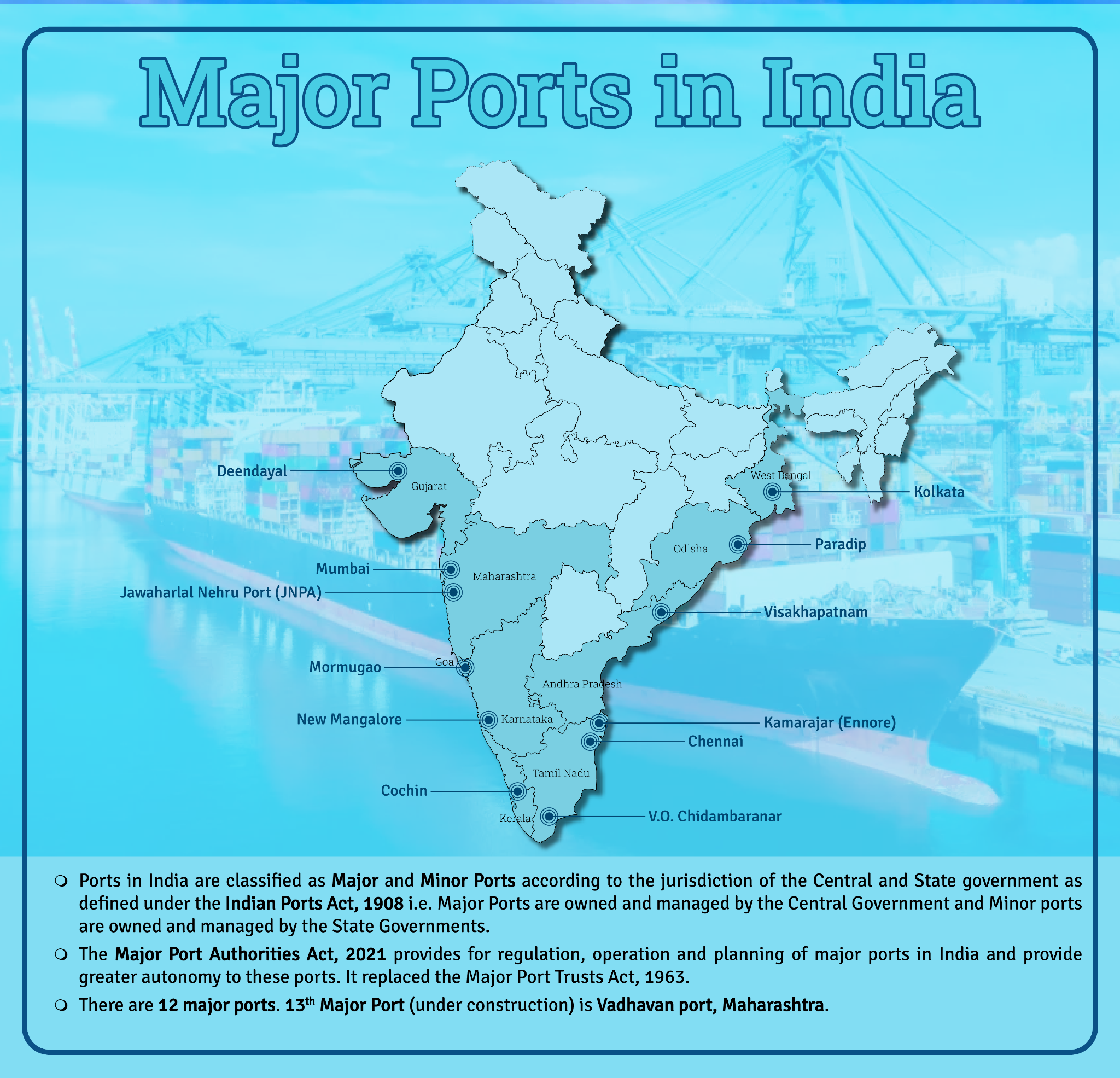Important Facts For Prelims
Mormugao Port on Environmental Ship Index
- 26 Oct 2024
- 5 min read
Why in News?
Recently, Mormugao Port Authority (MPA), Goa became the first Indian port to be listed on the Environmental Ship Index (ESI) portal for MPA's Harit Shrey programme.
- It was acknowledged by the International Association of Ports and Harbours (IAPH).
- In another development, the government plans to limit the development of inland waterway terminals (IWTs) near major ports to safeguard their economic interests.
What is the Environmental Ship Index (ESI)?
- About: It is a system designed to evaluate and reward ships for their environmental performance.
- ESI identifies seagoing ships that perform better in reducing air emissions than the current International Maritime Organization (IMO) emission standards.
- The 2023 IMO greenhouse gas(GHG) Strategy envisages a reduction in the carbon intensity of international shipping by at least 40% by 2030.
- ESI identifies seagoing ships that perform better in reducing air emissions than the current International Maritime Organization (IMO) emission standards.
- Origin of ESI: The ESI Initiative commenced on 1st January 2011 and from then onwards, its database under the administration of International Association of Ports and Harbours (IAPH).
- Evaluation Criteria: It assesses the emissions of nitrogen oxides (NOx) and sulphur oxides (SOx) released by ships.
- The index includes a reporting scheme for greenhouse gas emissions from vessels.
- Main Characteristics of ESI:
- Port-Centric System: Designed specifically as a system from ports to ports.
- Voluntary Participation: Allows shipowners to demonstrate the environmental performance of their vessels on a voluntary basis.
- Applicability: Can be applied to all types of seagoing ships, regardless of size or function.
- Automated Calculation: It is automatically calculated and maintained.
- Incentives: Ports and authorities may offer incentives, such as reduced port fees or priority berthing, to ships with higher ESI scores.
Mormugao Port Authority (MPA)
- Historical Background: Mormugao Port was commissioned in 1888.
- With the rise of mining as a key industry in Goa, Mormugao Port was developed as an iron ore terminal.
- Major Port Designation: Mormugao Port was declared a Major Port in 1964.
- Iron ore traffic growth, especially due to Japanese demand during their industrial reconstruction, helped in the dramatic growth of Mormugao port.
- Strategic Development Plans: In 1965, a Perspective Plan was established to develop Mormugao Port for deep-water access and high-capacity loading to compete with Brazil and Australia in the iron ore market.
- Green Transition: Harit Shrey program was launched in October 2023 that offers discounts on port charges to vessels that use green fuel and emit no nitrogen oxides and sulphur oxides.
Developments on Inland Waterways
- National Waterways(NW) Expansion: India is developing 111 national waterways (NWs) that span over 20,000 kilometres.
- Current Status of IWTs: There are approximately 50 IWTs currently operational.
- Cargo Traffic Growth: Since 2013-14, cargo transported through inland waterways rose from 29.16 million tonnes in FY15 to 133.03 million tonnes in FY24.
- Future Targets: Under the Maritime India Vision 2030 and Maritime Amrit Kaal Vision 2047, the government aims to increase cargo traffic through inland waterways to 200 million tonnes by 2030 and 500 million tonnes by 2047.
UPSC Civil Services Examination, Previous Year Question (PYQ)
Prelims
Q. In the context of proposals to the use of hydrogen enriched CNG (H-CNG) as fuel for buses in public transport, consider the following statements: (2019)
- The main advantage of the use of H-CNG is the elimination of carbon monoxide emissions.
- H-CNG as fuel reduces carbon dioxide and hydrocarbon emissions.
- Hydrogen up to one-fifth by volume can be blended with CNG as fuel for buses.
- H-CNG makes the fuel less expensive than CNG.
Which of the statements given above is/are correct?
(a) 1 only
(b) 2 and 3 only
(c) 4 only
(d) 1, 2, 3 and 4
Ans: (b)






